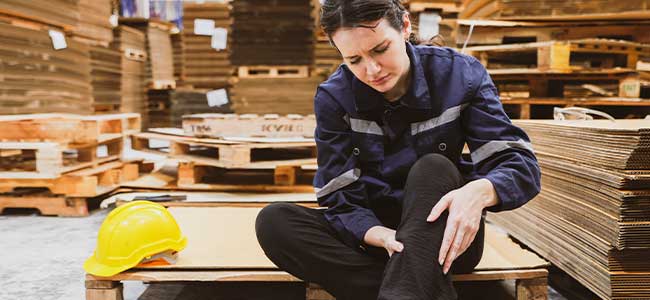
Foot Protection for Women
Proper footwear fit is critical to performance and safety for women on the job. What is the research around women’s foot design and which features go into ensuring women’s safety?
- By Dan Feeney
- Aug 01, 2024
Work boots serve several vital functions. The safety toe protects the upper of the foot. Robust soles shield the underfoot. Expertly designed traction reduces the incidence of tripping. However, when optimizing shoes for safety features alone, the resulting footwear products sacrifice efficiency and fit and amplifies many daily challenges for workers. The impact on women is outsized due to inaccurate size grading from the associated men’s last and cuff of the boot.
The Daily Impact of Improper Fit
Over the course of a workday, female workers spend hours of standing, walking, and lifting heavy objects. These actions require the musculoskeletal system to produce forces. Any mismatch in fit of the product to the worker can cause inefficiencies, slowing the worker down and predisposing her to injury. Footwear products should enhance the fit in addition to other safety features to decrease injury risk and enhance ankle stability and efficiency. Properly fitting, ankle stabilizing footwear is essential for women’s performance and safety on the jobsite, but as current designs often fail to account for gender-specific anatomical differences, there is an increased risks of injury and inefficiency.
Workers recognize the negative impact from prioritizing safety features over fit. More than half of surveyed workers reported pain or fatigue in their feet, knees, hips, and backs with many associating their ailments to poorly fitting footwear. Common safety modifications (e.g. safety toes, stiff cuffs) can limit normal gait function in workers, with female workers again baring an outsized impact.
For instance, the internal dimensions of work boots were compared against the dimensions of over 200 workers’ feet and showed most workers had excessive space in the length and inadequate width in the boots, which can result in a tripping hazard. Moreover, poorly fitting footwear, as seen in the study, can result in excessive “toe clawing” (or bunching of the toes) to stabilize the boots onto the foot. Consumers should find footwear that provides both the necessary protection and matches their foot dimensions to enable efficient movement throughout the day.
Anatomical Differences in Footwear Fit
Even in identical foot lengths, there are gender-specific anatomical differences that affect the fit – and therefore performance – of footwear. On average, women have a larger calf and ankle circumference than men with the same length foot. Women also tend to have a higher arch, smaller instep, and a shorter metatarsal length from the heel than men.
This article originally appeared in the July/August 2024 issue of Occupational Health & Safety.